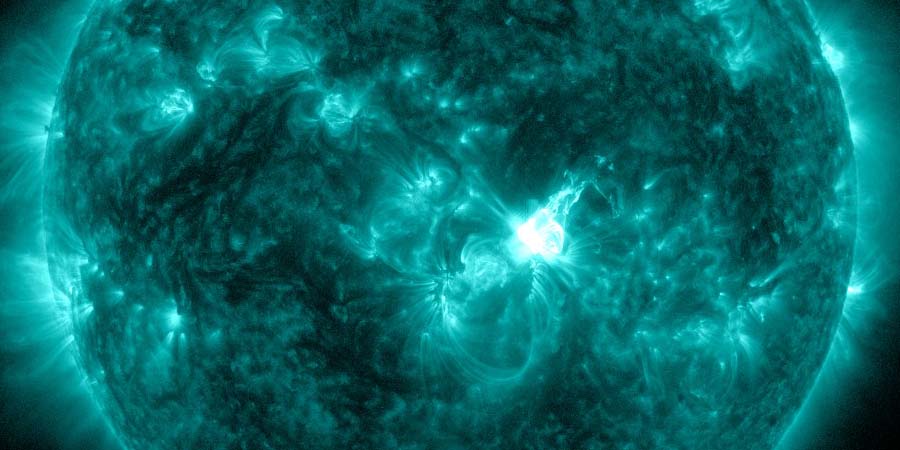M9 solar flare with earth-directed CME
Sunday, 11 February 2024 17:24 UTC

Finally a sign of life from sunspot region 3576! It produced an M9.0 solar flare (R2-moderate) which peaked yesterday at 23:07 UTC. The solar flare was fairly impulsive but did produce a nice eruption with a mostly northward trajectory.
We see on the SOHO LASCO coronagraph imagery that an asymmetrical full halo coronal mass ejection was launched but the bulk of the ejecta is heading north. However as we are dealing with a full halo CME, it does seem very likely that part of the plasma cloud will impact our planet. Based on a launch speed of about 850km/s we estimate the arrival of this CME around midnight UTC (plus/minus 6 hours) on 13 February. Minor G1 to moderate G2 geomagnetic storm conditions are possible after the cloud arrives at our planet.
The M9 solar flare from sunspot region 3576 launched an asymmetrical full halo coronal mass ejection which likely has an earth-directed component. Arrival time is expected around midnight UTC on 13 February. Minor (G1) to moderate (G2) geomagnetic storm conditions are possible… pic.twitter.com/FB8C31qBxt
— SpaceWeatherLive (@_SpaceWeather_) February 11, 2024
Thank you for reading this article! Did you have any trouble with the technical terms used in this article? Our help section is the place to be where you can find in-depth articles, a FAQ and a list with common abbreviations. Still puzzled? Just post on our forum where we will help you the best we can!
Latest news
Latest forum messages
Support SpaceWeatherLive.com!
A lot of people come to SpaceWeatherLive to follow the Sun's activity or if there is aurora to be seen, but with more traffic comes higher server costs. Consider a donation if you enjoy SpaceWeatherLive so we can keep the website online!

Space weather facts
| Last X-flare | 2024/12/08 | X2.2 |
| Last M-flare | 2024/12/24 | M1.0 |
| Last geomagnetic storm | 2024/12/17 | Kp5+ (G1) |
| Spotless days | |
|---|---|
| Last spotless day | 2022/06/08 |
| Monthly mean Sunspot Number | |
|---|---|
| November 2024 | 152.5 -13.9 |
| December 2024 | 115.2 -37.3 |
| Last 30 days | 120.1 -38.2 |


